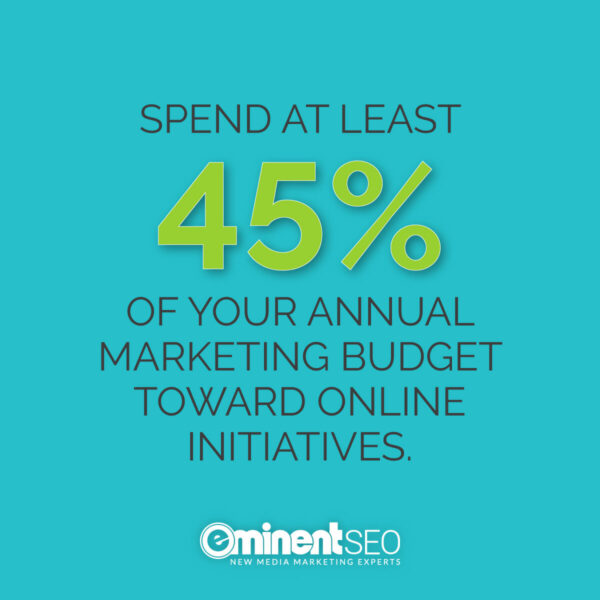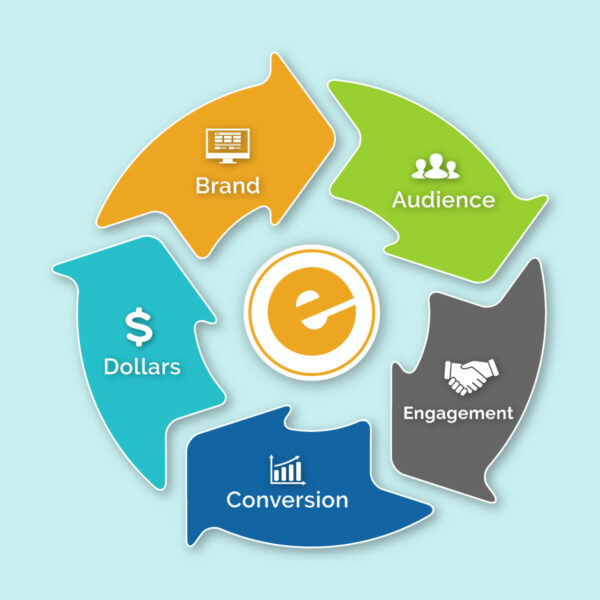Whether your fiscal year begins in January or July, what you allot for marketing budget has much to do about what you believe you’re supposed to spend. And this belief could be founded on formulas or equations that have been passed on by business owners or prior leadership within your organization. Who knows? It could be from something you found after searching online (like that ever happens).
The following insights are my effort to help you discern between industry folklore and the reality of your marketing budget needs – to reassess this year, and to plan to make next year more pennywise instead of pound foolish.
The Life Cycle of Marketing Budget Creation
The very term budget, when spoken, heard and visualized, immediately invokes numbers and, for some, nausea, especially after a lackluster sales performing year. Before you ever get to working those numbers that will set up many marketing decisions to come, you need to take some vital steps to ensure that the budget will truly have a fair shake in supporting your endeavors. And these steps have little to do with dollars.
Take a Good, Hard Look at Who You Really Are
As you’ve probably already guessed, there is no steadfast rule on just how much of your overall business budget should be dedicated to marketing efforts. Because every business vertical is different, so too are the marketing needs of each enterprise, eventually effecting the spend necessary to get the desired goals achieved.
If you are a consumer-based company with a product or service as your calling card, the marketing budget will undoubtedly be costlier and more general-public-facing than if your company catered to B2B markets.
Marketing Budget Mistake #1: Not truly understanding your own brand.
If you haven’t taken the time to establish your company brand, there’s a trickle down of miscommunication that ensues. This will assuredly result in missing the mark on your audience, sales and client acquisition and retention.
Now Remember What Your Clients Really Look Like
Company owners, marketing directors (no matter how good you are) and creative geniuses often carry a level of delusion about whom their product or service attracts. In our minds, we glamorize who we are and, in turn, who our audience is.
There’s nothing like that swift kick in the butt during a public appearance, conference or trade show that wakes us up into, “Oh…so you’re our customers…” This resets brand messaging and affects marketing spends.
Marketing Budget Mistake #2: Having no clue about your customer base.
Once your business accurately connects with your product or service audience, then your marketing messaging can speak to their needs through your brand to nurture long-term relationships, referral business and conversions on both fronts.
Where to spend your marketing budget is, in large part, founded on the places most likely to capture your audience. Now’s the time to switch hats (no, not to a black hat), to take off that corporate hat and be your customer.
If You Were Your Client, How Would They Find You?
Before you start adding line items to your marketing budget for what remains this year and planning for the next-year spend, consider the human behaviors of your customers. Think about their physical attributes, emotional needs, mental acumen and anguish, even their insecurities. Because somewhere in all of that is the place(s) where you will identify strategic pinpoints in their days to hit them with who you are and why they can’t live without you. This is the sweet spot.
Cross-Channel Marketing Maximizes Your Budget Spend
As long as you’re spending money to get more business, set up your marketing in a way that boosts each campaign through heightened reach and stronger impressions. You can achieve this when you use multiple marketing channels that cross-promote one another.
Marketing Budget Mistake #3: Deploying one-off initiatives.
Need an example? If you are spending money on pay-per-click campaigns, be sure to include hyperlinks within the campaign landing page that keep visitors on your website, possibly leading to a product or service page, or even to a blog post.
For more traditional marketing, if you’re advertising on a radio station (yes, companies still do that), make sure you get value adds through a presence on the radio station’s website or have your radio spot mention a promo code for a special deal – but one that only applies if the customer goes to your website or calls and mentions the promo code.
It isn’t just about capturing your audience: You have to tell them what to do and where to go. Your business leads your customers, but they must feel as though they are in control. Sounds like a personal relationship, doesn’t it? Yeah…it is.
Once You’ve Found Them, Spend Your Money on Keeping Them
In sales, it’s all about keeping the conversation going. “No” is just no today; it could be a “yes” tomorrow. This is the premise regarding social media engagement. Foster the relationship. Talk about things that matter to you and your audience. Give them something to think about, talk about and share to get others talking about it. Be informative, yet entertaining. If you do social right, your followers do the work for you.
Marketing Budget Mistake #4: Relying on social paid boosts alone.

Working a social platform well is all about building your profile and followers organically. Like every other marketing program, it’s a long game usually played for 90 days to 18 months before seeing real, consistent results. You can’t just put your big toe in it. Jump in wholeheartedly and get your hair wet!
What to include in your market budget going forward:
- Social videos
- Search engine optimized content
- Online chat programming
- Blog outreach (backlinks, linking to other sites, guest bloggers)
- Email drip campaigns (enough touchpoints and upsells without being annoying)
- Direct response marketing (extremely targeted campaigns)
- Public relations (it’s free!)
Best Practices After the Marketing Budget Needs Are Set in Stone
Keep a certain amount of marketing dollars fluid. Meaning…give your business some cush. Without having some extra funds available to use at your discretion, your business may miss golden opportunities that you couldn’t have planned for, but nonetheless have presented themselves out of left field.
In addition, many companies experience the fourth-quarter panic, where any remaining funds from a current year’s marketing budget must be spent or they lose it. This phenomenon is common in the VAR (value-added reseller) market. Therefore, the best way to avoid this panic is to keep on top of your marketing month to month.
Reassess marketing initiatives every 30-60-90 days to ensure there are no gaps in the life cycle of your marketing budget (noted earlier in this article). By staying tuned into your plan while it’s in action, it allows for a nimbleness that enhances marketing scalability. This strategy also empowers creative agility when needed, allowing you to keep your budget running lean while having room for unexpected marketing opportunities that will undoubtedly arise throughout the year. They always do.
Recommended Market Budget Spend
The following figures reflect how you should allocate your marketing dollars, based on industry trends and consumer behavior forecasts:
- Online marketing – 45% of your overall marketing budget, broken down into:
- Search engine marketing – 47%
- Social media – 25%
- Online video – 11%
- Other online channels – 17%
Budgeting for online marketing is on the increase while traditional media advertising spends continue to drop year after year. According to eMarketer, “TV ad spending is 35.08 percent of total media … total digital ad spending is 38.4 percent of total media.”
These figures are for 2017 and represent how consumer behavior has shifted, and continues to shift, toward online screen usage (mobile platforms).
Stay Open to Sharing Costs
One aspect of your marketing budget that you may overlook in the planning stages is in shared sponsorships or co-op dollar spends. This is when your business can partner with another company and share the marketing opportunity.
The cost to participate in these programs is decreased as the expense is shared, and when done right, the benefits far outweigh the dollars spent. Moreover, the relationship between you and the business(es) in cooperative marketing efforts provides a seamless exchange between audiences.
Co-op marketing advantages include:
- Your business engages your current customers.
- Your business engages new prospects.
- The business increases its market reach.
- Increased market reach occurs at reduced cost.
Can’t See the Fund Forests from the Trees
Sometimes, we can put emotion and ego into our business and the decisions we make about the business. It’s hard not to. Your business is your baby. However, one of the most difficult, yet loving things you can do for your business is to let go of it.
Refer your online marketing strategy to a third party who can review your company goals, marketing budget spend and short- and long-term missions to devise a solid plan that will make the most out of your marketing dollars without shedding a tear.




